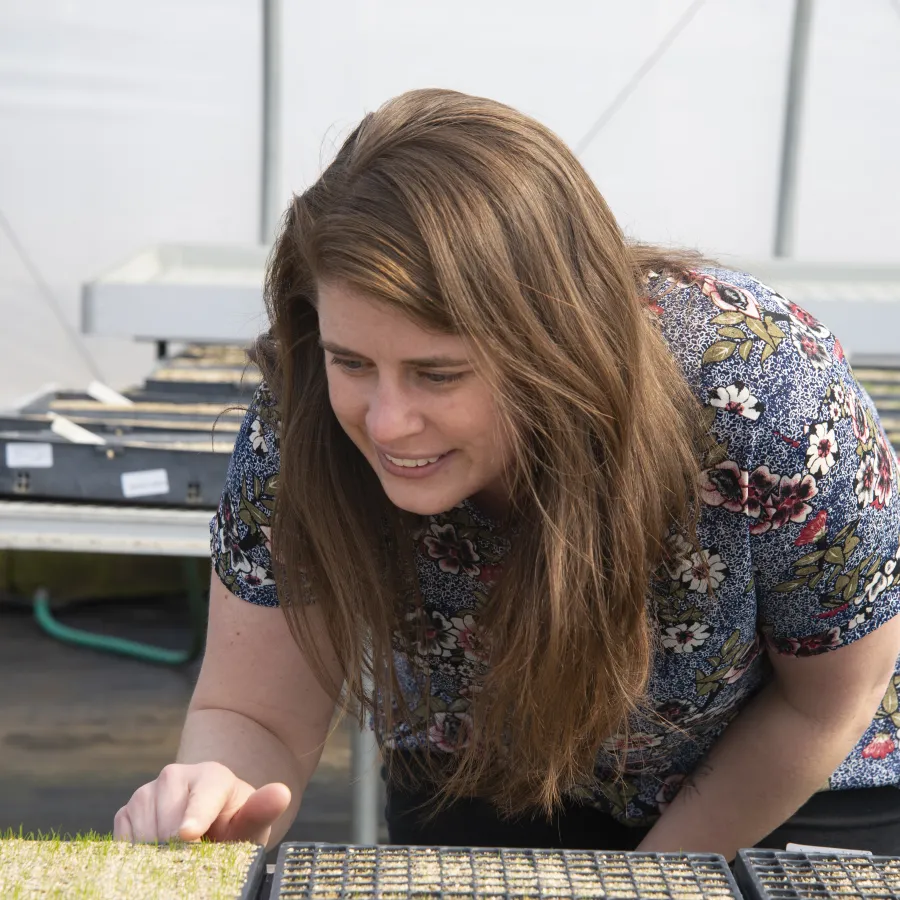Checking in with Botanic Garden Intern Alum Jessamine Finch ’12
Where Are They Now

Published March 22, 2024
A Blooming Curiosity Through Endless Botanical Wonder
By Jessamine Finch '12
Whenever I am asked to reflect on how I came to be a botanist, my answer always starts the same way: I was lucky enough to attend a college with a botanic garden.
During my time at Smith, the botanic garden functioned as a radiant kaleidoscope through which I could learn about and engage with all aspects of plant biology, both in my classes and as a student worker. It bolstered my liberal arts education, supporting the intersections of botany, garden history, design, horticulture, conservation biology, literature, feminist theory, and countless other disciplines. It was the first place I germinated seeds, cooed over cotyledons, and recorded data. The Botanic Garden of Smith College provided me with endless botanical wonder, nurturing a blooming curiosity that carries me to this day.
Funnily enough, the motivating factor that first brought me to the botanic garden was not my interest in plants, but my desire for a better work-study position. I cold-emailed the botanic garden about a work-study position and was connected with Elaine Chittenden, the manager of living collections, who was in need of a student to operate the plant label engraver. I jumped at the opportunity, and never looked back.
That year I lugged my orange 5-gallon bucket—filled with aluminum plant labels, screws, a socket wrench, and a power drill—all over campus to install labels on trees and shrubs as well as in the occasional perennial bed. This was my introduction to the management of living collections, and I was delighted to meet new plants from all over the world. Under Elaine’s supervision, I worked with her on collection management until graduation.
Soon my academics arrived at the doors of Lyman as well, through a horticulture course and a colloquium on plant evolution. Relatively quickly, I was spending the majority of my waking hours in Lyman, and I couldn’t have been happier.
The summer after my sophomore year, I took an internship at the botanic garden in public horticulture. I was also given the opportunity to work with Associate Professor of Biological Sciences Jesse Bellemare (who taught the colloquium), conducting field research on the lovely bluebead lily (Clintonia borealis). I had never contemplated getting involved in research, but I was excited by the prospect. Little did I know this would set me on a path leading to where I am today.
Upon graduating from Smith, I interned at the Morris Arboretum in Philadelphia. Through conferences, meetings, and field trips I was able to visit many botanic gardens and arboreta during my time in this horticultural breadbasket of the East Coast. I loved my work in horticulture, but was missing the cerebral engagement of original research. So in the fall of 2013, I accepted a position in a joint Ph.D. program in plant biology and conservation run by Northwestern University and the Chicago Botanic Garden, under the supervision of Dr. Kayri Havens-Young. The program gave me invaluable experiences across a broad range of plant science methods and practices, including ex situ seed banking, insect collection, molecular genetics, and data analysis.
In February 2022 I joined the conservation department of Native Plant Trust (formerly known as the New England Wild Flower Society), a plant conservation nonprofit founded in 1900. Not only did this position feel like a dream fit, but the history of the organization resonated deeply with me. The Society for the Protection of Native Plants, as it was first known, was created by a group of Boston women who were barred from joining the then all-male New England Botanical Club. In addition to pathbreaking women, gardens and horticulture have long been a refuge for queer folks. As a queer woman in botany and public gardens, it is incredibly significant to me that I work at a garden built by two men in love with plants and each other: owner and designer of Garden in the Woods Will C. Curtis (1883-1969) and curator Howard O. ''Dick'' Stiles (1911-1984).
Through my current work, I’m thrilled that I get to continue to collaborate with old botanic garden colleagues like Elaine Chittenden and Landscape Curator John Berryhill, as well as new staff members, like Director Tim Johnson. I was ecstatic to see that the new strategic plan for the garden makes a robust commitment to biological conservation as well as human diversity, equity, and inclusion. Through partnerships with organizations like my own, Smith’s botanic garden is engaging students in hands-on conservation, such as seed collection for the seed bank of the New England Plant Conservation Program, which I manage. We have been banking seed since the late 1980s and have amassed 2,700 seed collections of approximately 400 rare, native plant species. I am so proud to have originated from a garden that is committed to racial equity and decolonization, and I continue to closely follow and learn from its efforts.